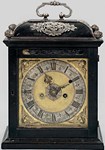A IS FOR ABBEY. Major John Roland Abbey (1894-1969) was a celebrated bibliophile whose collections were dispersed at a series of important auctions from 1970-75. He also produced three landmark bibliographies, still much used, known (in short) as Abbey Life, Abbey Travel, and Abbey Scenery.
B IS FOR BLANKS. Blank leaves (usually at the front or back of an antiquarian book) may be part of a gathering or ‘quire’, and, if so, their absence or presence should be noted.
C IS FOR COLLATION. Booksellers and collectors are often to be seen rapidly turning through a book. They are not speed-reading but checking a book’s completeness – for example, the survival of half-titles, advertisements, etc that historically were often discarded as inessential.
D IS FOR DECKLE EDGE, or, the untrimmed edge of a leaf or sheet of paper. The deckle edge was unavoidable until the 19th century, a byproduct of the papermaking process.
E IS FOR EX-LIBRARY. A term used to indicate that a book was once in a public library, and showing obvious signs such as ink stamps, card pockets and accession numbers. All will have a detrimental impact on value.
F IS FOR FOXING. Brown discolouration marks on paper, and spotting (usually circular), is known as foxing. Early issues of works by Charles Dickens are notorious for having very badly foxed plates, and therefore relatively clean examples command higher prices.
G IS FOR GRANGERISED. Another word for ‘extra-illustrated’ – the practice of having additional appropriate material (usually illustrations) bound in with a book. Named after the Reverend James Granger (1723-76), whose Biographical History was the subject of some notable examples of the kind.
H IS FOR HAND-COLOURING. Many prints, maps, and books have handcolouring, but not all of it was done at the time. Contemporary hand-colouring is to be desired, later ‘improvements’ less so, and the collector should evolve a discerning eye in this respect.
I IS FOR IMPRIMATUR. Books, particularly in France and Britain, were strictly regulated, and required to carry a licence, or imprimatur, often printed on a separate leaf. In France, the terms ‘Approbation’ or ‘Privilège’ were used.
J IS FOR JACKET, or dustwrapper. The presence or absence of a dustwrapper can hugely affect the price of a book, consequently spawning counterfeits – some very hard to detect, others easily discernible. Booksellers often protect jackets using an inert, conservation-grade clear plastic.
K IS FOR KEY-PLATE. A key-plate was sometimes issued alongside a plate, print, or map, providing a numbered or alphabeticised key to an explanatory text. Their low survival rate can make them a lot rarer than the plates they describe.
L IS FOR LOCATIONS. Book and map sellers may give abbreviated institutional locations (eg ‘C’ = Cambridge) to allow for comparisons with other known copies of a work offered. Generally, the fewer the locations, the rarer the work. For books, the usual online library catalogues are ESTC (books prior to 1800), COPAC (mainly UK books after 1800) and (for world-wide coverage) OCLC and Worldcat, all of which give locations, often with accurate collations.
M IS FOR MARGINS. Wide margins (the blank area round the text) are desirable and may indicate a ‘Large Paper Copy’ of a book. These were more expensive than the ordinary print run, and still keenly sought after.
N IS FOR ‘NEVER SEEN BEFORE…’ Not strictly a bibliographical phrase, but you will hear it spoken in many circles. It’s something we all hope to find.
O IS FOR OFFSET, denoting that ink has transferred between opposing pages or, more detrimentally, from the text onto a plate.
P IS FOR PLATES. Not the sort thrown around in Greek restaurants, but a reference to illustrations printed on leaves separate from the text, and which are not normally included in the pagination or register of a book.
Q IS FOR QUIRE, a group of leaves formed from a single folded sheet; or a group of leaves folded together and sewn through the folds. Other words used to refer to the same or similar thing are: gathering, signature, or section.
R IS FOR REGISTER. Assembling a book could be complex, so the printer added a sequence of letters and numbers (the signature) at the foot of the first page (or pages) of a gathering, as a guide or register. In some older books a correct register list would appear at the end. The practice is also useful to the bibliographer in assessing the completeness of a complex work, especially when it is unpaginated (eg early bibles and dictionaries).
S IS FOR SIZE. With maps and prints, three main size references may be given: sheet, plate, or image size, abbreviated to the measurement with the letter S, P or I next to it.
T IS FOR TRIMMED. Prints and maps have often been cut down. Trimming within the image or plate mark can be a serious defect, involving loss to the image itself, or loss of the title and publication details such as date, place, etc.
U IS FOR UNBOUND ie, never bound, (as opposed to ‘disbound’ which denotes a book or pamphlet separated from its binding).
V IS FOR VERSO. In the West, if you look at the right-hand page of a book, this is the recto. The other side of the leaf is the verso. However, with Japanese, Hebrew, and Arabic books, which all begin at the ‘back’, the descriptions are reversed.
W IS FOR WASHED. Books, maps and prints may be washed to remove staining or dust. This is not necessarily detrimental but any form of restoration should be noted. Foxing and spotting can be bleached out, but may return with time.
X IS FOR XYLOGRAPHY. The art of relief printing from wood.
Y IS FOR YAP-EDGED. The angled over-hang of a binding, usually limp leather, which partially conceals the foreedges of the text block.
Z IS FOR ZAEHNSDORF, a London firm of high-quality bookbinders. Like Rivière, and Sangorski & Sutcliffe, its work was often signed in tiny lettering either on a binding’s inner dentelle or on the front free end-paper.
A wider-ranging glossary covering art and antiques is also available on our website












